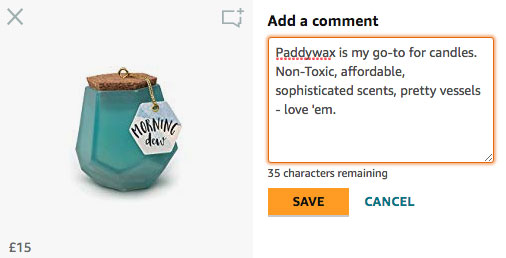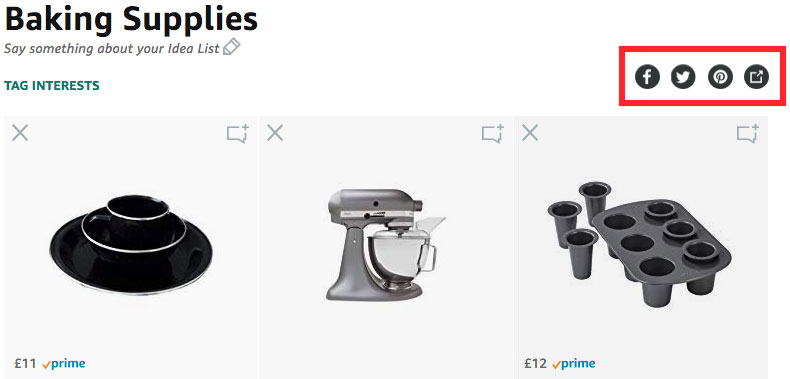Content Marketing
9 Key Components to Building Your Best Idea Lists

© Andrea Piacquadio / Unsplash
An Idea List is the perfect tool for enabling your fans to shop your top product picks on Amazon. By grouping your recommendations into categories — aka Idea Lists — your followers get an organised, on-demand, and bespoke shopping experience.
They can access your curated lists of suggestions at any time, and know that they’re already sorted by theme for quick browsing and buying. Idea Lists also make it a snap for you to build content around several items at once — no need to individually promote each product.
Building Your Best Idea Lists
And while any Idea List is hard-working on its own, there are a handful of best practices you can implement to optimise your categories. The below elements are the key features in all the best lists; implement each to ensure you’re getting the most from yours.
1. The Right Size Category

You want the breadth of products in any one list to be limited in scope — but not too limited. Each list’s theme should be broad enough to warrant at least three items, but not so broad that the list becomes unwieldy and unhelpful.
The “right” size is unique to each influencer’s brand and tastes, but as a generic example, “Thanksgiving Beverage Essentials” could be too narrow, while “Holiday Hosting Favourites” may not be narrow enough. If you notice your lists looking too big or too sparse, reconsider the category.
2. Between 5 and 25 Products

Again, the “right” number of products in a list is dependent on many factors and varies considerably, but a good rule of thumb is to aim for something in the 5 to 25 range. This seems to be the sweet spot of enough suggestions to be a helpful resource, but not so many as to be overwhelming.
3. An Appropriate Range of Prices

As with all of your content, each of these list components should be tailored to best resonate with your audience, but this one especially is important to customise. Product recommendations that fall significantly outside your followers’ pricing expectations or financial means will at best be ignored and at worst cause fans to eventually ignore you.
They may conclude that if you’re suggesting items they normally wouldn’t consider, they can’t relate to you, or you’re creating for a crowd they’re not a part of. Not to mention, if they can’t afford or don’t align with your product picks, they won’t buy them!
If you’re unsure of the appropriate price range for your followers, check your reporting. See what products have historically been popular among your fans, and use those prices as your guide.
4. A Clear and Compelling Title and Description

You already know the importance of a good caption or headline, and your list titles and descriptions are no different. Take a minute to craft an engaging list name that immediately identifies the theme, and give your category a description that’s … well, descriptive. You’re not necessarily trying to be original here — clear and compelling works best.
5. A Logical or Intentional Order

A major part of an Idea List’s appeal is its organisation — grouping by product type or theme makes for a streamlined shopping experience. Make that experience even more efficient and enjoyable by listing items in a purposeful order.
Depending on the category and/or your audience’s preferences, that could mean ordering by price, by popularity, by necessity, or any other factor that makes sense for your followers.
6. Products You Personally Stand Behind

Regardless of how you position them, your recommendations are likely to be interpreted as endorsements to some degree. It’s important, then, to only promote products you believe to be reputable and that you’re comfortable associating with your brand.
Your followers are more likely to trust your suggestions over other sources given the relationship you’ve built with them, so it’s important that you trust the quality and overall experience of your recommended products. And on that note…
7. Thoughtful Captions

Your fans are your fans because they admire your work and value your opinion. You are, as an influencer, literally an influence on them. As such, commentary on why you love and recommend a product goes a long way.
Add these notes to each item in your lists. It only takes a few seconds, but it really matters.
8. A Timely Theme and Up-to-Date Product Listings

While some of your lists will undoubtedly be evergreen, others can and should be created seasonally. A gift guide is the obvious example and it definitely makes for a fantastic Idea List, but there are many additional ways to hook your followers up with just-in-time suggestions too.
Major shopping moments are major earning opportunities for influencers, so don’t sleep on creating and sharing specialised lists.
It’s also important to keep your individual recommendations across all your lists fresh and up-to-date. Products can be discontinued or upgraded, sellers can change their offerings, or whatever else — make it a habit to regularly review your listings and be sure everything’s available and linked up correctly.
9. A Solid Promotional Plan

The best list in the world is of no use if people don’t know about it. Luckily it’s easy to drive traffic to your lists: simply include your short store URL in any of your content. It’s also simple to link directly to your lists themselves — click any of the social sharing buttons above the upper right corner of the product grid to promote as you please.
That’s the tactical part, but you still need a promotion strategy for regularly mentioning your lists. As you do your usual content planning, be sure to think through how you can naturally weave affiliate pieces and links into the schedule.
Any Idea List is a helpful resource for connecting your followers to your favourite products. But to build your best lists — and to boost your earnings — incorporate each of the components above.
